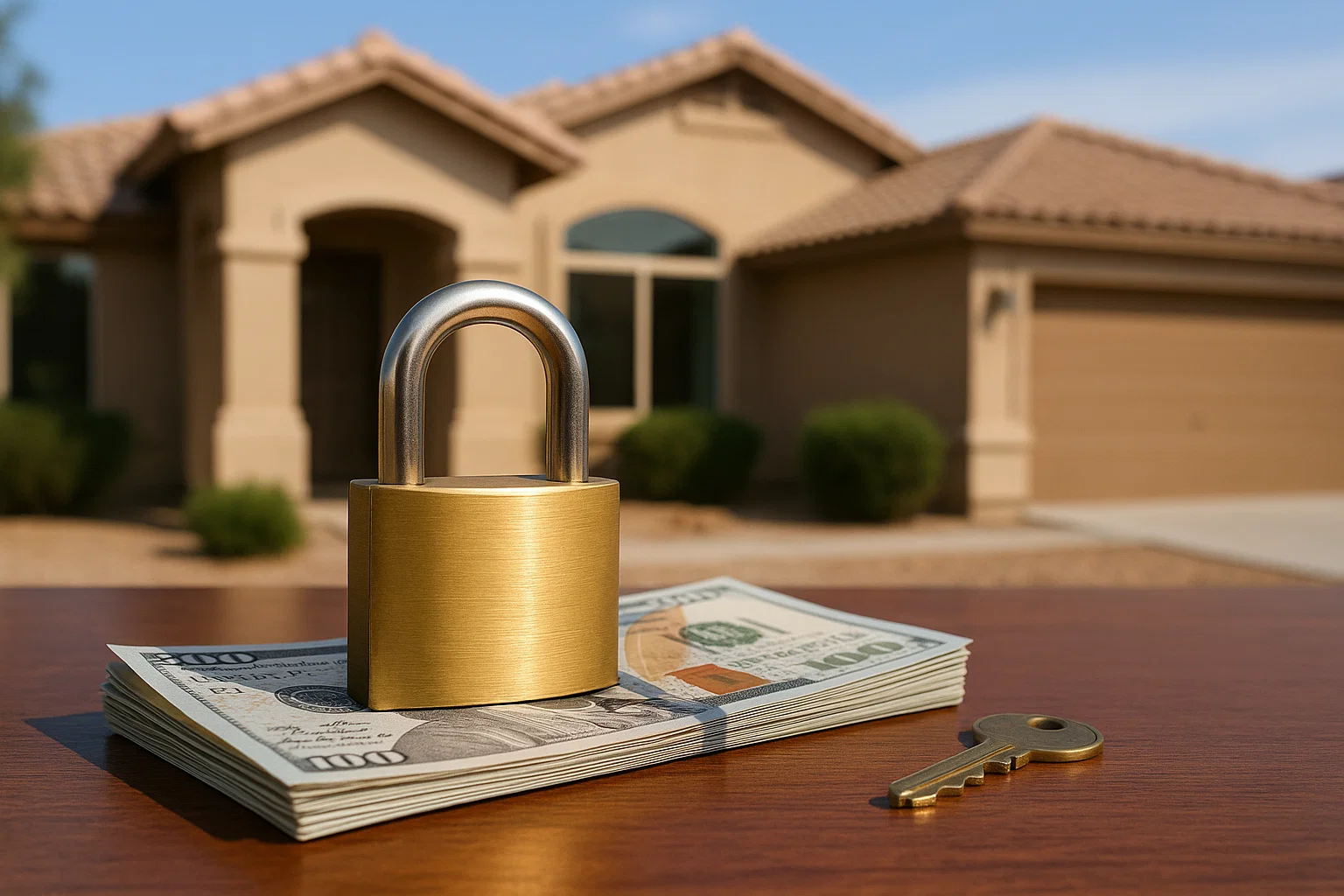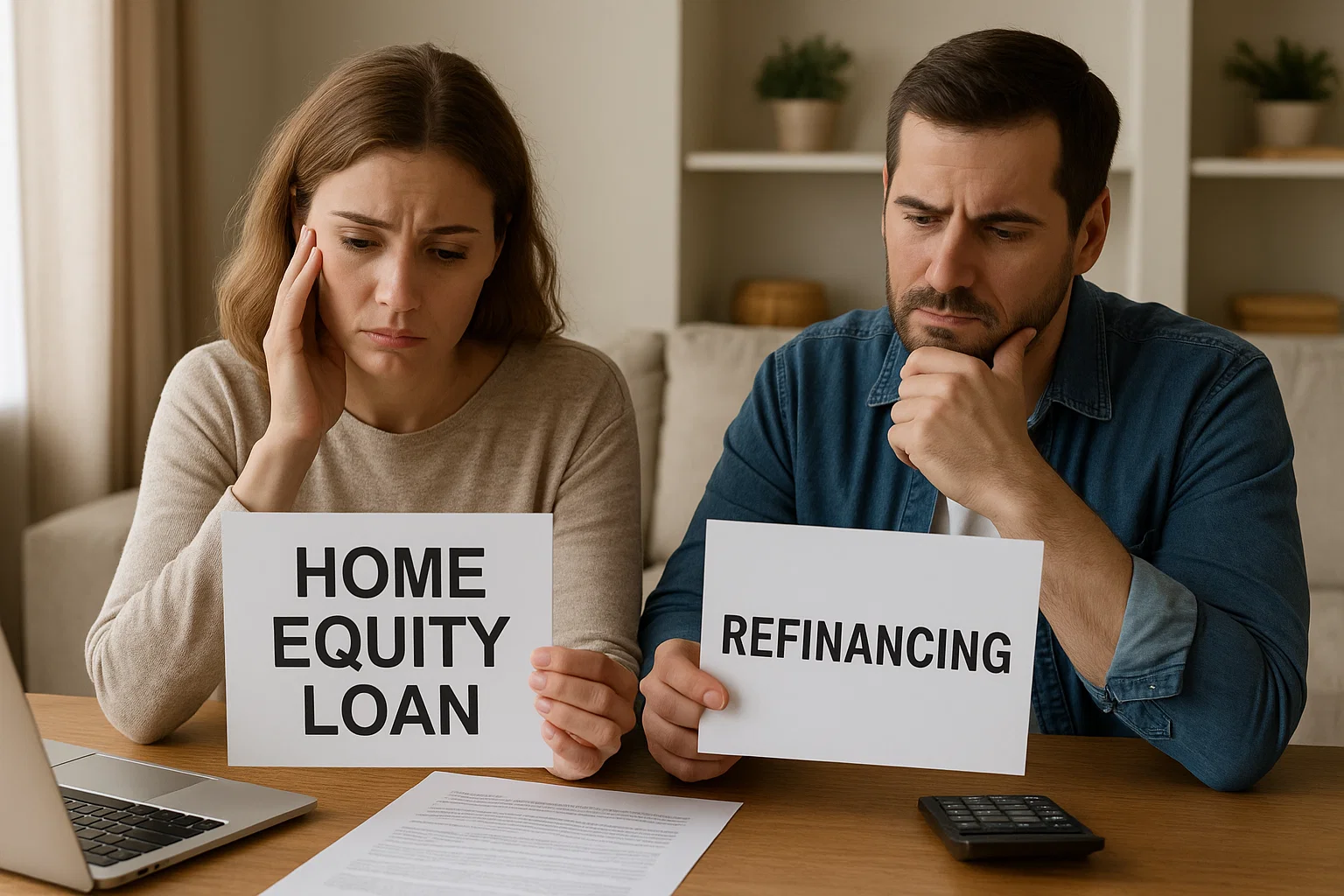Unlocking Your Home's Value: Strategic Cash-Out Refinancing for Major Life Goals
November 19, 2025
.png)
Homeownership quietly builds wealth over time, as mortgage payments reduce the loan balance and property values gradually appreciate. The result is equity: the difference between your home’s value and the amount owed. For many families, this equity is their largest financial asset, often exceeding retirement accounts, savings, and other investments combined, though it sits dormant until activated.
Cash-out refinancing offers a strategic method to convert this accumulated home equity into accessible funds for significant expenses. These funds might be used for consolidating high-interest debts, funding home renovations that increase property value, covering education costs, or addressing medical bills. Understanding whether this approach serves your financial interests or introduces unnecessary risk is crucial for leveraging your home as a wealth-building tool.
Understanding Cash-Out Refinancing
Cash-out refinancing replaces your existing mortgage with a new, larger loan. The difference between the old loan balance and the new loan amount comes to you as cash. Unlike standard refinancing, cash-out refinancing deliberately increases your mortgage to extract equity accumulated through principal payments and property appreciation.
The mechanics are straightforward: if your home is worth ₹75 lakh and you owe ₹40 lakh, you have ₹35 lakh in equity. You might take out a new ₹55 lakh mortgage—₹40 lakh pays off the existing loan, and ₹15 lakh is distributed to you as cash (lenders typically require you to maintain at least 20% equity as a cushion). This new loan replaces the old one entirely, with fresh terms, interest rates, and a new repayment schedule.
The primary advantage is accessing substantial funds at mortgage interest rates, which typically run significantly lower than options like credit cards (18-42% annually) or personal loans (11-24%). If large sums are needed for major expenses, this might be the most cost-effective borrowing route available.
However, this strategy increases your debt load. You are converting an asset (home equity) into a liability (a larger mortgage), which carries serious implications for long-term financial security.
The refinancing process requires working with lenders to evaluate your financial profile, arranging an updated property appraisal, submitting income and credit documentation, and closing on the new loan. Be prepared for closing costs ranging from 2-5% of the new loan amount, which can be rolled into the mortgage, thereby increasing your total debt and monthly payments.
Essential Questions Before Cash-Out Refinancing

Before proceeding, certain questions must be answered strategically:
- Purpose: Do you have a clear, strategic purpose for the funds? Cash-out refinancing works best for specific goals, such as home improvements or debt consolidation, not vague desires for "extra cash".
- Impact: Will the funds address problems or create new ones? Using the cash to pay off existing credit cards only helps if underlying spending issues have been resolved; otherwise, you risk accumulating new debt on top of a larger mortgage.
- Affordability: Can you comfortably afford the higher monthly payments? Increased loan amounts mean increased monthly obligations—ensure your budget accommodates this without sacrificing other financial priorities.
- Stability: How does your home secure your family's stability? Remember that you are putting your property at risk as collateral; defaulting on a cash-out refinanced mortgage carries the potential for foreclosure and loss of your home.
When Cash-Out Refinancing Creates Value
The sources outline specific scenarios where cash-out refinancing is strategically sound:
- Consolidating High-Interest Debt: This is the most strategically sound scenario. Homeowners can dramatically reduce their total interest burden by consolidating substantial credit card balances (e.g., 24-36% interest) or personal loans (e.g., 14-18%) into a lower mortgage rate (e.g., 8-9%). Caution: This strategy demands an honest assessment of what caused the debt. If overspending caused the accumulation, refinancing without behavioral changes simply converts unsecured debt (credit cards cannot take your home) into secured debt (mortgage default risks foreclosure).
- Property Value Enhancement: Home improvements that genuinely increase property value are another solid use case. Renovating kitchens, adding bathrooms, upgrading essential systems, or improving energy efficiency can increase home values by amounts exceeding the improvement costs. Using low mortgage rates to fund these upgrades ensures the borrowed funds directly enhance the collateral securing them.
- Education Funding: This sometimes justifies cash-out refinancing when education loans carry higher rates or are not available in sufficient amounts.
- Medical Emergencies: Major unexpected expenses or medical emergencies occasionally necessitate large sums on short notice when savings are insufficient. However, this is defined as crisis management rather than strategic planning.
Calculating Your Cash-Out Benefits and Risks (The Amit Example)

A real scenario illustrates the potential benefits of strategic debt consolidation:
Amit had a ₹50 lakh home loan at 8.5% (₹40,000 monthly payment), plus ₹8 lakh in credit card debt at 30% (₹20,000 monthly minimum payments), and a ₹5 lakh personal loan at 15% (₹11,000 monthly). His total monthly debt payments were ₹71,000. His home appraised at ₹80 lakh, and he owed ₹47 lakh, leaving him with ₹33 lakh equity.
Amit refinanced to a ₹63 lakh mortgage at 8.2% for 15 years.
Debt Allocation
Amount (₹)
Pays off existing mortgage
47 lakh
Eliminates credit cards/personal loan
13 lakh
Covers closing costs
3 lakh
His new single monthly payment became approximately ₹60,000, resulting in a monthly saving of ₹11,000, or ₹1.32 lakh annually. Crucially, he eliminated the burden of managing multiple creditors, and every rupee paid now reduces principal rather than feeding high-interest charges.
The Trade-Offs: Amit converted ₹13 lakh of unsecured debt into secured debt against his home, meaning he now risks foreclosure if he defaults. He also extended the repayment of that ₹13 lakh from a potential 3-5 years to 15 years, ensuring he will pay more total interest on those consolidated debts unless he aggressively prepays. If he subsequently accumulates new consumer debt, he ends up in a substantially worse and potentially unsustainable financial position.
Critical Considerations for Cash-Out Refinancing
To avoid turning wealth into dangerous debt:
- Evaluate Costs vs. Benefits: Closing costs (2-5% of the new loan amount) can be substantial; ensure the long-term savings or strategic value justifies these expenses.
- Maintain Equity Cushion: Borrowing the maximum available equity leaves no buffer if property values decline, risking trapping you underwater (owing more than the home’s worth).
- Address Behavioral Issues: If spending patterns created the original debt, implement budget controls and spending constraints before and after refinancing to prevent debt reaccumulation.
- Compare Alternatives: Home equity loans or Home Equity Lines of Credit (HELOCs) might serve your needs without requiring you to replace your entire mortgage, particularly if your current mortgage rate is favourable.
- Calculate Total Interest Costs: Be aware that lower monthly payments can mask higher total interest if you restart a 20-30 year amortization schedule on funds that you would have otherwise paid off much sooner.
Building Your Cash-Out Strategy
Cash-out refinancing is a powerful financial tool that rewards strategic deployment.
Begin by articulating exactly why you need funds and why this is the best source. Write down your intended use for every rupee; vague plans suggest you are not ready for this commitment.
Calculate comprehensive costs, including closing fees, additional interest from the larger loan balance, and the extended repayment timeline. Only proceed if cash-out refinancing delivers a clear, substantial advantage over alternatives like personal loans, HELOCs, or accelerated saving.
Partner with lenders who will thoroughly explain the risks alongside the benefits, calculate exact payment changes, and help you model best-case and worst-case scenarios. Avoid institutions that rush decisions or minimize the serious implications of converting home equity to debt.
Your home is your family's shelter, financial foundation, and likely your largest asset. Approach this process with discipline and clear purpose: define exact fund usage, ensure behavioral changes prevent debt reaccumulation, and maintain adequate equity cushions. The wisdom to deploy this power exists, but it should only be used when circumstances truly warrant converting wealth into debt for strategic purposes that improve, rather than endanger, your financial foundation.

Alex Chen

Alex Chen













Get in touch with a loan officer
Our dedicated loan officers are here to guide you through every step of the home buying process, ensuring you find the perfect mortgage solution tailored to your needs.
Options
Exercising Options
Selling
Quarterly estimates
Loans
New home

Stay always updated on insightful articles and guides.
Every Monday, you'll get an article or a guide that will help you be more present, focused and productive in your work and personal life.









.png)
.png)
.png)
.png)
.png)
.png)
.png)
.png)
.png)
.png)
.png)
.png)
.png)
.png)
.png)
.png)
.png)
.png)